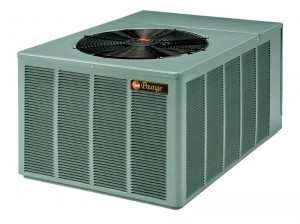Introduction to Your New Air Conditioning Unit
Your new air conditioning unit is made up of three main components: an evaporator, a compressor and a heat exchanger. Refrigerant circulates between these three main components. The refrigerant alternates between a liquid and a gas.
How Your New Air Conditioning Unit Works
The refrigerant starts in the condensing coil, where it is hottest. It passes through an expansion valve, converting it from a liquid to a gas. When refrigerant converts from a liquid to a gaseous state, it can absorb heat as latent heat. The refrigerant passes through an evaporator coil, generally located inside the building. A fan blows inside air over the evaporator coil, cooling it. The refrigerant also absorbs some of the heat. The refrigerant is pushed to the compressor where it is converted to a liquid. It travels to condensing coils in a condenser. The condenser is located outside. After passing through the condenser, the refrigerant is passed to the expansion valve to repeat the cycle.
Can My Air Conditioner Heat My Home?
If your air conditioner is a heat pump, it can provide heat as well as cooling capacity. In the case of heat pumps, the same equipment can heat your home when the flow of the refrigerant is reversed. Alternatively, if your air conditioner was reversed so that the evaporator cooler was outside, it would release heat inside instead of venting it outside, heating up the room.
Is an Air Conditioner a Dehumidifier?
Air conditioners are not dehumidifiers, but they will act as such in some circumstances and may have dehumidifiers installed alongside the AC. The evaporator coils are colder than the air inside. Moisture in the air passing over the evaporator coils may collect on them. If the moisture collects and stays inside of the AC, the moisture will corrode the electronics and the coils. This is why periodically checking the condenser coils, drying them or airing them out as necessary or installing a dehumidifier with the AC may be necessary. If the moisture that condenses on the evaporator coils drips down to the floor, it will eventually evaporate into the room. A humidifier placed near the air conditioning unit’s evaporator coils, this would reduce the harm humidity could cause. In wetter climates, humidifiers may be installed along with the air conditioner in the HVAC system to prevent the humidity in the house from fostering the growth of mold

 Coupons
Coupons Book online
Book online Pay now
Pay now




